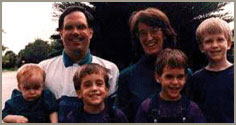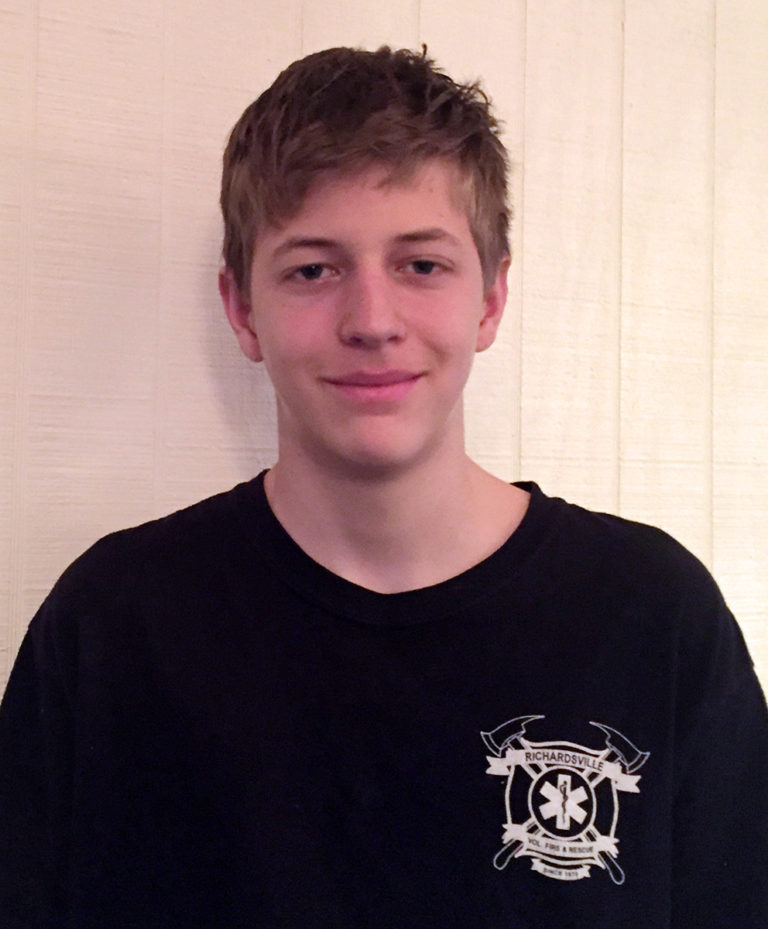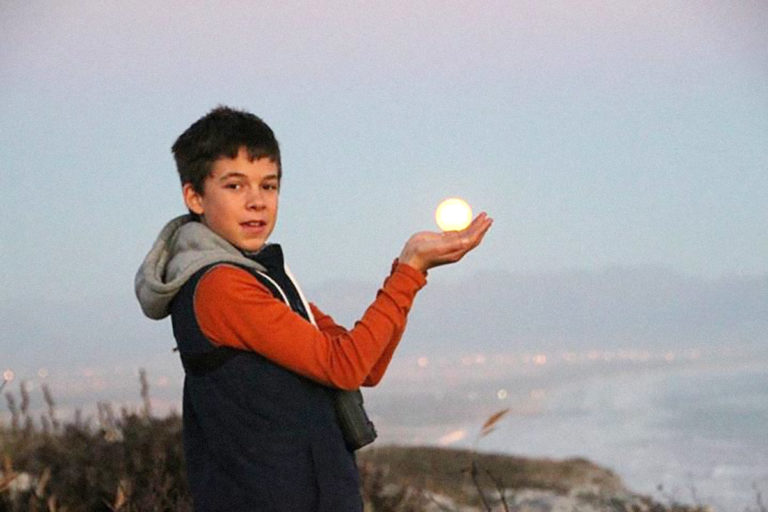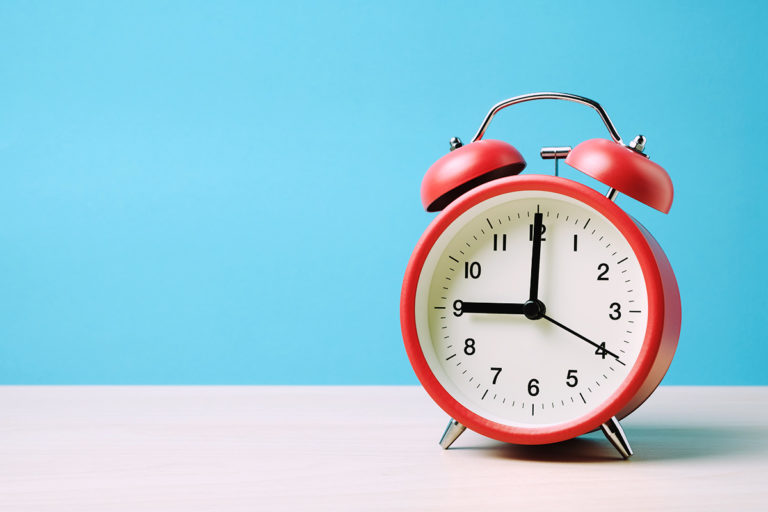Cerebral Palsy: “Michael and Mark”
 Our story begins on January 4, 1990, when I delivered two beautiful boys, 3 months premature. At birth, Michael and Mark weighed 1 pound, 12 ounces, and 1 pound, 12 ounces, respectively. The boys were given a 10-15% chance of survival. Michael and Mark are now five years old. They also have a six-year-old brother, Johnny, and a 15-month-old brother, Timothy.
Our story begins on January 4, 1990, when I delivered two beautiful boys, 3 months premature. At birth, Michael and Mark weighed 1 pound, 12 ounces, and 1 pound, 12 ounces, respectively. The boys were given a 10-15% chance of survival. Michael and Mark are now five years old. They also have a six-year-old brother, Johnny, and a 15-month-old brother, Timothy.
During their first weeks of life, Michael and Mark surpassed all the statistical norms for preemies. They made incredible strides despite a series of setbacks. One was Mark’s lung problem. The doctors expected him to die but within three days, God miraculously healed him. Another setback was an eye problem for Mark that had the potential of causing total blindness. He underwent a special procedure that solved the problem.
The boys came home from the hospital when they were three months old, three weeks before their due date. This was unheard of and we rejoiced, but reality set in all too soon. We were exhausted trying to care for the twins and their 20-month-old brother. Yet the boys were remarkably healthy. In fact, when I questioned our doctors about the boys’ developmental delays, they always encouraged me with, “Give them time. They’re 25 week babies and they’re SO healthy.” Besides, there were no other children like them to make a comparison. Normally twenty-five-weekers don’t live.
At 14 months, I noticed that Michael seemed more stiff than a normal baby. At their 15 month appointment, I mentioned it to the doctor and after taking a closer look, he diagnosed both boys with cerebral palsy. CP is a form of brain injury caused by oxygen deprivation. It affects motor skills: gross motor such as walking, fine motor such as hand coordination, and speech motor such as articulation.
The doctors encouraged us saying that the boys probably had a mild form of CP since it had not been detected earlier. What they didn’t explain was that if the boys didn’t make progress, then what now seemed minor at 15 months, would become major at 3 years. Plus, the rest of the prognosis was grim. Michael would probably have learning disabilities and the best we could hope for in Mark would be learning disabilities. He would probably be mentally retarded. (Since then it has become obvious that if anything, they are both above average. But at the time, it was a hard pill to swallow.) After we came around, all we could think was, “Just tell me what our next step is. What can we do to help these little guys?”
We began with physical and occupational therapists coming to our home once a week. This lasted for a while and then we moved to Orlando. Here, we tapped into some resources that provided physical, occupational, and speech therapy. The boys made some progress.
A few months later the physical therapist wanted to cast Michael’s legs to prevent contractions in his ankles. He was just at the point that he could get up on all fours. He wouldn’t be able to do this with the casts. We asked a lot of questions. The physical therapist said that casting was the only help she could offer.
At this time, a friend started telling us about “treating the problem rather than dealing with the symptoms.” This really made sense to me, especially with my nursing background. Then the physical therapist insisted that we agree to wheelchairs for the boys to transport them to a school setting. With the advice and support of some other health professionals, we refused the casting and the wheelchairs. This would not only have discouraged the boys emotionally but it would have been physically detrimental as well.
About that time Doug and I took a week-long course for parents of brain-injured children. It offered methods and a commitment to target the problem, not the symptoms. We came home with some excellent information, much-needed affirmation for our beliefs and some great ideas to implement a program. However, the program was rigid, calling for daily therapy that would encompass the entire day. Again we wondered, “What about Sunday, our day of rest? What about Johnny? What about our family time? What about time to just be a mother to these boys? How could we emotionally survive?” We just couldn’t agree to the entire program. We couldn’t “live and breathe” therapy every waking moment. This wasn’t acceptable to the directors of the program. They said that if we wouldn’t commit ourselves to their entire regimen, they wouldn’t work with us. We mutually agreed to go our separate ways.
Soon after, as we struggled to implement bits and pieces from the program on our own, we met Bob Doman. We soon realized we had found the combination of treatment and philosophy we had been searching for. Bob’s goals seemed like our own:
- Help each individual child to go as far as he possibly can
- Treat the source (the brain), not the symptoms
- Work on specific tasks for specific gains
- Let families work within their own framework of priorities
What a relief to us! Finally, we had met someone who believed in us as parents and the strategic role we play in helping our children to achieve all that God has created them to be. Finally, a professional agreed that we could customize a program to meet the needs of our entire family. Finally, a professional was going to respect us as parents with God-given wisdom and offer us all the help he could in that role.
We began to implement Bob’s program in May of 1993. Two weeks later, I found out I was pregnant. Two weeks after that we went to Colorado for two months. We returned at the end of July and I was placed on bed rest for the remainder of my pregnancy. At 29 weeks, I was admitted to the hospital due to premature labor and remained there until Timothy was born six weeks later, as a healthy baby only five weeks early. I tell you all this so that you will see the less-than-perfect context in which we began Bob’s program.
When we began, we worked anywhere from 30 to 90 minutes per child, four to five days a week. Hearing this, you might expect less-than-astounding results but I am here to tell you that the progress we have seen in our boys is nothing short of amazing. At the time we first started with Bob, Michael could get up on all fours and move his left knee slightly forward. He still had a long way to go before he would crawl. His vocabulary was great, thanks to a very talkative family. However, his articulation was poor. Part of the problem was that he took a deep breath after every word. Today, after less than two years under Bob’s direction, Michael can pull himself to a standing position against furniture and can crawl onto the couch. He can “stand” steadily on his knees and can walk the full length of our house on his knees. His balance is so good that he can even carry toys with him as he walks this way. He also loves basketball and can shoot hoops quite effectively from his knee-standing position. He has aintained and expanded his good vocabulary while improving greatly in the area of articulation.
Mark began Bob’s program at about the point where Michael is today. He could pull up to furniture and was starting to take supported steps. However, he locked his knees with every step. Unlike Michael, Mark was unable to walk on his knees. His speech was marked by excessive stuttering and his vision was 20/200. He was plagued by double vision and was unable to make his eyes work together. Today, Mark walks independently without locking his knees. His gait is improving steadily. He can take one step up and one step down unsupported and is able to do a “true run.” His speech has improved and his stuttering has disappeared. His vision is now 20/80 in his “bad eye” and 20/30 in his good eye. He is also in the beginning stages of having his eyes focus together for the first time. Obviously, Bob’s program is working for us. We believe that part of our success is due to the freedom Bob has given us to implement his program within the context of our family-first priorities.
With the incredible gains we’ve seen, we are extremely encouraged. But our story isn’t over yet and at this rate, we see the boys achieving far more than the doctors ever predicted. We see them walking, running, reading, taking responsibility for themselves and others, and having a positive influence in their community and their world.
Why am I telling you all of this? There are several reasons. First of all, I want to encourage you. When Michael and Mark were diagnosed with CP, I longed for a “mentor,” another mother who could help me maneuver in these unfamiliar waters. I wanted someone to show me, as their mother, my next step in helping my boys. One of my friends was particularly helpful and I want to share her kernel of wisdom. It goes like this:
“When you’re overloaded, cut things in half. Keep cutting them in half until you can handle them. Never quit. You can always build up again once you’ve got your bearings. Never quit.”
The other reason I want to share our story is that I truly believe that God has blessed our efforts in a miraculous way. Regardless of your religious upbringing, you have probably heard the story of Jesus feeding the 5,000. In this story, Jesus blessed a boy’s lunch of 5 loaves and 2 small fish so that He could feed the people. After all 5,000 people were fed, there were 12 baskets of leftovers. I remind you of that story because I believe God still works this way today. I can’t do everything, but what I can do, I commit to Him. He blesses it and multiplies it. He surely has done this for my family and I believe He can do it for yours too.





